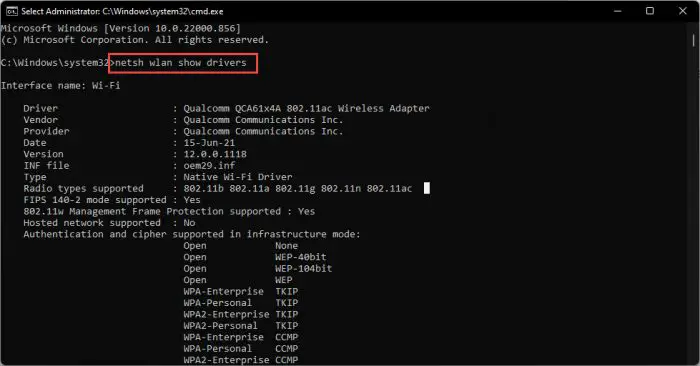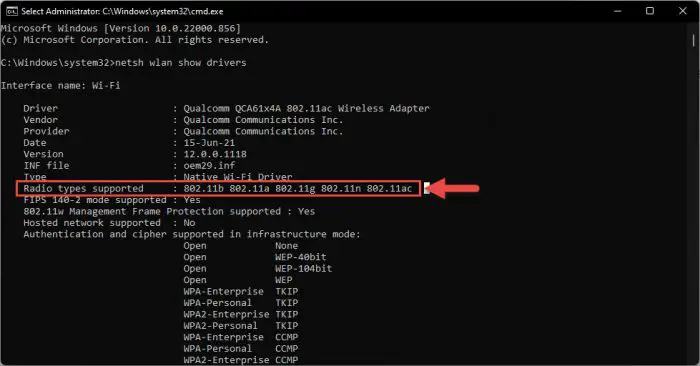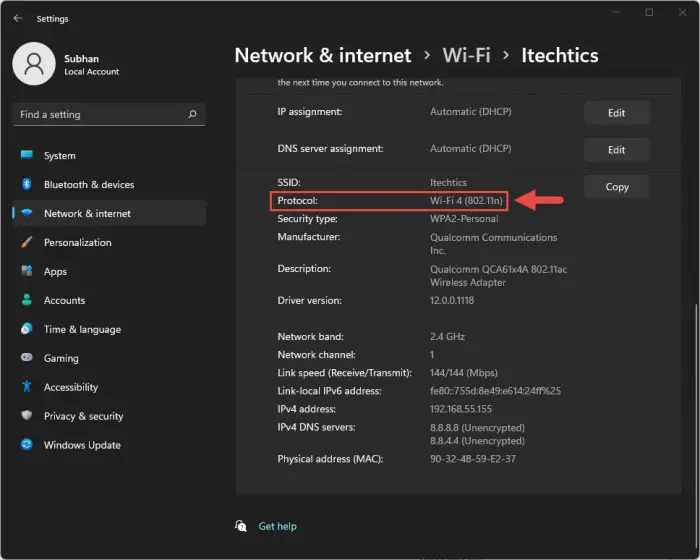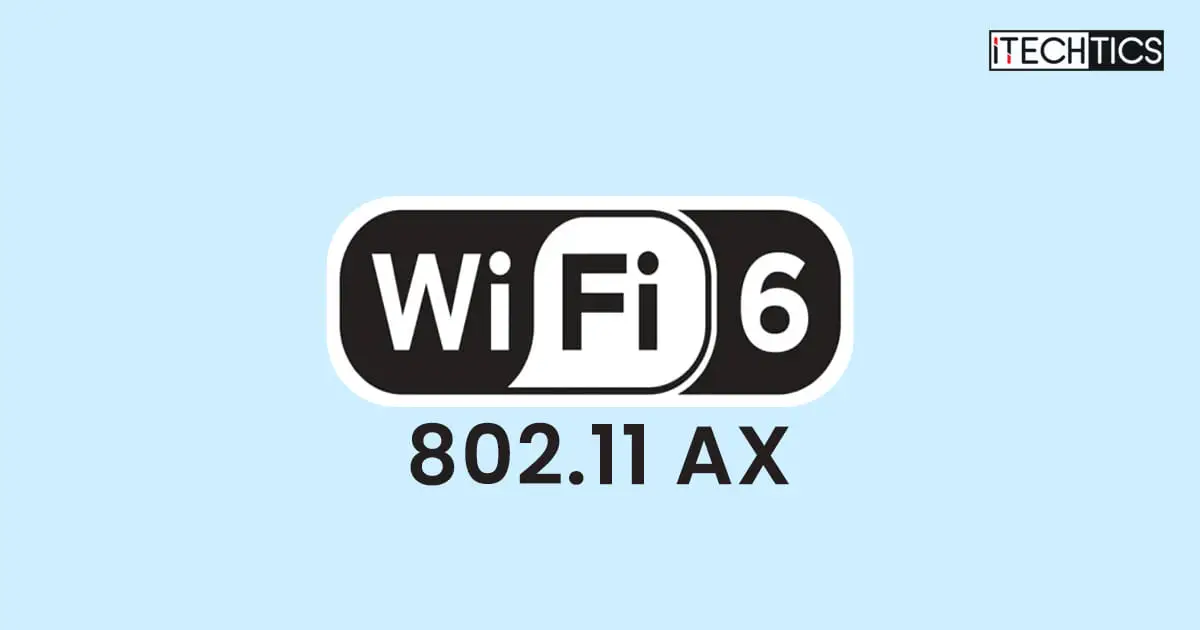Wireless Fidelity, or as we know it, Wi-Fi is the ability of a device to connect to the internet wirelessly. It has been around for some time, but now we want faster browsing and download speeds at greater distances. This is why the Wi-Fi Alliance, an international body aimed at promoting wireless technologies, marketed Wi-Fi 6 in 2020 with significant performance improvements over its predecessor.
Wi-Fi 6, also known as 802.11ax through IEEE standards, is the sixth generation which is currently the latest wi-fi technology making its way into electronic devices, such as our computers and smartphones, enhancing our online experiences. It provides nearly double the transfer speeds over Wi-Fi 5.
That said, whether the device you are using supports this technology is a different question. The Wi-Fi technology is severely dependent upon the hardware as well as the software. Both the transmitting device (router/access point) and the receiving device need to support it for it to work.
So how do you know if your mobile, laptop, or computer supports Wi-Fi 6? And if it does, is your device even using it, or opting to use a less efficient Wi-Fi technology without you knowing about it?
Table of contents
- Types of Wi-Fi Technologies
- What is Wi-Fi 6 (802.11ax)
- How to Check if Router Supports Wi-Fi 6
- How to Check Wi-Fi 6 Support on Windows 11/10
- How to Check if Windows PC is Connected Using Wi-Fi 6
- How to Check if Mac is Connected Using Wi-Fi 6
- How to Check if Android Phone is Connected Using Wi-Fi 6
- How to Check if iPhone is Connected Using Wi-Fi 6
- Final Thoughts
Today we are going to discuss the different Wi-Fi technologies and how they are different from one another, as well as how to check whether your device supports it.
Types of Wi-Fi Technologies
The first ever Wi-Fi technology was debuted in 1997 which was IEEE 802.11 (legacy). Since then, many different iterations have been released with significant enhancements and improvements over its predecessor. The table below briefly highlights the Wi-Fi technology over the years:
| Wi-Fi Version | IEEE Standard | Conventional Name | Theoretical Data Rate |
| – | 802.11 Legacy | – | 2 Mbps |
| First Generation | 802.11b | Wi-Fi 1 | 11 Mbps |
| Second Generation | 802.11a | Wi-Fi 2 | 54 Mbps |
| Third Generation | 802.11g | Wi-Fi 3 | 54 Mbps |
| Fourth Generation | 802.11n | Wi-Fi 4 | 450 Mbps |
| Fifth Generation | 802.11ac Wave 1 | Wi-Fi 5 | 866.7 Mbps |
| Fifth Generation | 802.11ac Wave 2 | Wi-Fi 5 | 1.73 Gbps |
| Sixth Generation | 802.11ax | Wi-Fi 6 | 2.4 Gbps |
This table will make you realize why the latest Wi-Fi technology is necessary – to maximize the data rate and reduce internet latency.
Not only that, Wi-Fi 6 is a game changer for the wireless world as it introduced new data transmission technologies.
What is Wi-Fi 6 (802.11ax)
Wi-Fi 6 is a wireless transmission protocol that combines 2 technologies to make data transfer faster than its predecessors. It uses MU-MIMO and OFDMA.
MU-MIMO
Previously, wireless devices were only able to communicate with one device at a time. This means the more devices were connected, the slower the internet got. But MU-MIMO changed this.
MU-MIMO stands for “Multi-user, multiple-input, multiple-output.” With MU-MIMO, the devices are now able to communicate with multiple devices at the same time, significantly increasing the transmission speed.
OFDMA
OFDMA stands for “Orthogonal Frequency Division Multiple Access.” This technology divides data packets into separate frequency bands which are then carried by separate signals. OFDMA takes data transmission speeds a step further, making Wi-Fi 6 even faster.
These 2 technologies work in coherence to achieve the Wi-Fi 6 protocol.
Now that you understand what it is and how it works, let us see whether your device supports it or not.
How to Check if Router Supports Wi-Fi 6
As we mentioned earlier, all hardware must support Wi-Fi 6 in order for it to work on your device. Therefore, to begin, you must ensure that your wireless router/ access point supports this technology.
Unfortunately, there is no direct method to confirm this except through the router’s manual. You need to make sure that the wireless router supports Wi-Fi 6 either through its user manual, or look it up on the manufacturer’s website.
Once you are sure that your transmitter supports it, proceed to check whether your device supports it.
How to Check Wi-Fi 6 Support on Windows 11/10
Both Windows 10 and 11 support the Wi-Fi 6 protocol. However, if you do not have the supported network card on your computer, then it won’t matter. Therefore, you need to ensure that your computer supports this technology.
To check for Wi-Fi 6 support on a Windows computer, follow these steps:
-
Enter the following cmdlet which will give you information about the supported Wi-Fi protocols:
netsh wlan show drivers
Check for Wi-Fi 6 support -
Now look for the data in front of “Radio types supported.” The IEEE names in front of it will let you know the supported Wi-Fi technologies by your network card(s).

Supported Wi-Fi protocols
As you can see from the image above, Wi-Fi protocols are only supported till 802.11ac (Wi-Fi 5), and 802.11ax is not included. This means that Wi-Fi 6 is not supported on our device. However, Wi-Fi 5 is. But are we sure that Wi-Fi 5 is being used? Let’s find out.
How to Check if Windows PC is Connected Using Wi-Fi 6
As we mentioned earlier, if your device supports Wi-Fi 6, it does not necessarily mean that it is using it. It may be possible that your router doesn’t support it, which is why your computer may be connected with older technology, causing slower downloads and internet browsing.
Thankfully, the Windows operating states which Wi-Fi protocol is being used whilst connected to a wireless router. Here is how to find out:
-
On a Windows PC, navigate to the following:
Settings app >> Network & internet >> Wi-Fi >> Network Properties
-
Here, scroll down and look for “Protocol.” The data in front of it will show you the current Wi-Fi protocol being used to communicate with the wireless network.

Currently-used Wi-Fi protocol
The network’s Properties page will show you the Wi-Fi protocol being used by your Windows device to connect to the router, as in the image above.
How to Check if Mac is Connected Using Wi-Fi 6
Similar to the Windows operating system, the macOS also explicitly identifies which Wi-Fi protocol is being used by your Mac to communicate with the wireless router. However, in a macOS, it is labeled as “PHY,” which is short for “physical layer.”
Here is how to check if you are using Wi-Fi 6 on a Mac to connect to the internet wirelessly:
-
Press and hold the OPTION key from the keyboard and then click on the Wi-Fi icon in the Mac menu bar.
-
Here, look for the “PHY Mode” option. The IEEE name for the Wi-Fi protocol in front of it will display your current protocol being used.
If the “PHY Mode” displays “802.11ax,” it means that you are currently connected to the internet with the Wi-Fi 6 protocol.
How to Check if Android Phone is Connected Using Wi-Fi 6
Some Android devices also display which Wi-Fi protocol is being used to connect to the router. Note that this is not true for all devices. Therefore, check to see if you can find that information using the steps below:
-
On your Android device, open the Settings, and then go to Wi-Fi & Network settings. There, click on the network properties you are connected to.
-
Here, you should be able to see the desired information under “Protocol” or “Technology.”

Wi-Fi protocol on Android
If you do not find any relevant information here, likely, your device does not display it.
How to Check if iPhone is Connected Using Wi-Fi 6
Unfortunately, there is no way of telling if your iPhone is connected to a router using Wi-Fi 6 or any other protocol for that matter since iOS currently does not display any such information.
However, after some research, we were able to determine that iPhone 11 and later models support Wi-Fi 6 (802.11ax). Therefore, if your router supports this protocol, then you should be connected to it with Wi-Fi 6.
Final Thoughts
Wi-Fi 6 does not end here. There have been further iterations to Wi-Fi 6, known as Wi-Fi 6E, which supports even more enhanced technologies and even faster data transmission.
With that, rumors for Wi-Fi 7, the seventh Wi-Fi generation, are also circulating like crazy. There are reports that it might be launched next year (2024). Even so, it will take a while for this technology to reach devices and into the hands of the public.
As anticipated, Wi-Fi 7 will be much more advanced than Wi-Fi 6, offering more speed and opening new doors for video and data streaming, online gaming, etc.





